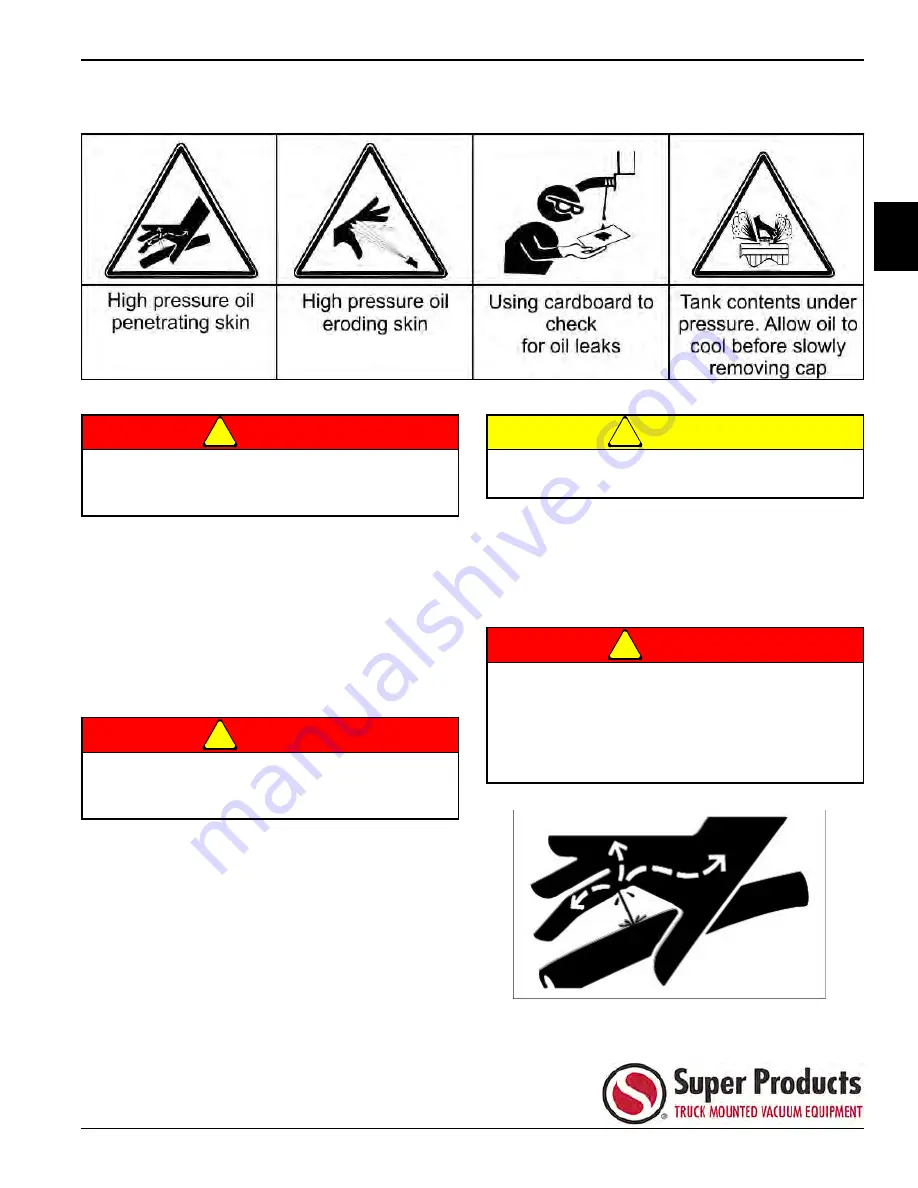
SAFETY
Publication: 0028607
1-9
1
HIGH-PRESSURE FLUID LEAK HAZARDS
Figure 1-8
DANGER
• Do not operate equipment with oil or fuel leaks.
• Keep all hydraulic hoses, lines, and connections
tight and in good condition before applying
pressure to the system.
• Relieve hydraulic pressure before servicing the
hydraulic system.
• Remove and replace or test hydraulic hoses if a leak
is suspected. Have a qualified service facility perform
the test.
DANGER
HI
• Always wear safety glasses and impenetrable
gloves.
• Use paper or cardboard to search for leaks.
• Do not use hands or body parts to search for leak.
• Keep hands and body away from pin holes and
nozzles ejecting hydraulic fluid.
CAUTION
• Tank contents may be under pressure.
• Allow oil to cool before removing cap slowly.
• Relieve oil pressure before removing cap slowly.
• Stay away from hot oil that may spray from tank or
hoses.
DANGER
Figure 1-9
To avoid serious injury or death from
high-pressure hydraulic oil leaks penetrating
skin, follow these rules:
High-pressure fluid leaks can be invisible. When
checking for hydraulic leaks and working around
hydraulic systems, follow these rules:
Use caution when removing hydraulic tank cap.
Contents may be under pressure.
High-pressure hydraulic oil can puncture skin. If
injured, seek immediate medical attention and
inform the physician of the cause of the injury.
Surgery is required to remove the fluid from the
body. Failure to seek proper medical attention will
result in serious injury or death.
Summary of Contents for Camel 1200 (Dump Body)
Page 1: ......
Page 2: ......
Page 4: ......
Page 62: ...1 52 Publication 0028607 SAFETY 1...
Page 64: ...2 2 Publication 0028607 PRE OPERATION 2 Figure 2 1 Figure 2 2 1 3 2 5 6 4 7...
Page 106: ...4 18 Publication 0028607 SEWER CLEANING TYPICAL SEQUENCE 4...
Page 118: ...5 12 Publication 0028607 WATER RECYCLING SYSTEM 5...
Page 132: ...6 14 Publication 0028607 LUBRICATION AND MAINTENANCE 6...
Page 156: ...i vi Publication 0028607 IX...
Page 157: ......




































